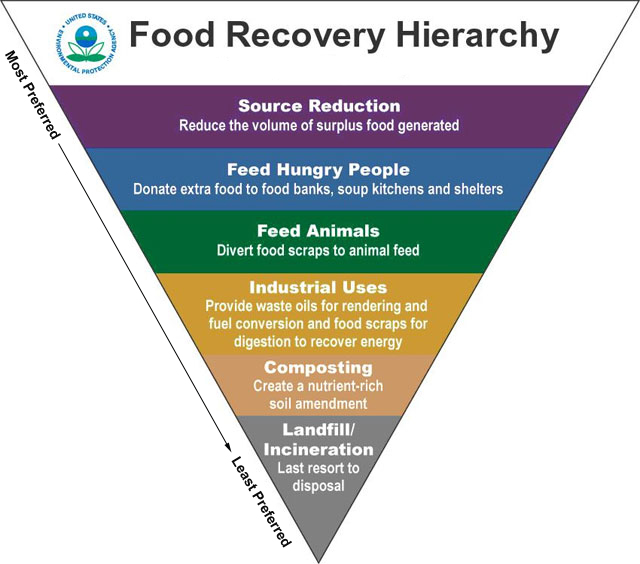It is no secret that we waste tons of food – literally tons. The EPA lists the US generating over 37 million tons in 2013 alone, and this number is very conservative1. Food waste occurs at various points in the value chain – production, manufacturing, retail/restaurants, and consumers. But this isn’t something new – unfortunately we’ve been wasting food for generations. So why are we focused on it now?
Enter Hunt Briggs, a consultant with RRS but also a cofounder of ReGenerate Solutions which developed a small-organic waste-to-energy system for commercial food waste. Currently Hunt is working on an initiative known as Rethinking Food Waste Through Economics and Data (ReFED). ReFED was seed funded by a dozen foundations and is a collaboration of over thirty business, nonprofit and government leaders committed to reducing U.S. food waste by 50% by 2030. ReFED was formed in early 2015 to create a Roadmap to Reduce U.S. Food Waste, the first ever national economic study of food waste with a multi-stakeholder group working to develop a roadmap for action.
“Our approach to sustainably managing materials has matured. Recently, our life-cycle approach is giving us a fresh view of how organics offer value – embedded energy, nutrient content and soil benefits – that is currently being lost through disposal,” stated Briggs.
ReFED is segmented into three parts. First, quantifying food waste in the supply chain and pinpointing where it is happening geographically across the country. Second, analyzing the key problems and evaluating the most promising solutions. Third, developing a road map for those solutions based on the ability to yield strong economic returns combined with positive impacts to society and the environment. The Roadmap is designed to fill the gap between awareness and action, by creating transparency in the costs and opportunities of a more efficient food system.
Sarah Vared, principal of MissionPoint Partners, an impact investment firm acting as the ReFED project lead stated, “There are significant barriers along every stage of the value chain – limited understanding of food expiration, expense and liability of food donation, unpredictable volumes and high costs of donating and recycling food, and insufficient consumer demand for food preservation technologies – for which this project is identifying possible solutions.”
Most of us are familiar with the EPA food recovery hierarchy. It moves from most preferred to least preferred food recovery methods reinforcing the highest and best use of food waste. The project refocuses the EPA levels into three key stages: prevention (source reduction), recovery (feed people), and recycling (feed animals, industrial uses, composting, anaerobic digestion).
The project has highlighted solutions that could divert at least 20% of food waste from the landfill.
Hunt Briggs: “The greatest economic and environmental benefits are found in prevention. Simply put, every pound of food you prevent from becoming waste is a pound you don’t pay to grow, manufacture, transport, refrigerate and market. And of course you don’t pay to recover, recycle, or dispose of it either. But we also know, realistically, the majority of food waste will be very difficult to avoid so it’s critical we understand how to recover and recycle the material effectively.
Although most food waste reduction activity is in the early adopter phase, this project is highlighting potential solutions that can involve more mainstream entities and achieve scale. It will require collaborative efforts to build networks, standardize systems, create new models and finance projects. ReFED highlights the type of transformational changes that will be needed to unlock this potential. The Roadmap to Reduce Food Waste will be released in March, 2016.
“The project is generating insights and identifying where catalytic capital can best be applied to make maximum impact,” stated Briggs. “These actionable insights will guide foundations, motivate entrepreneurs, and inspire investors to know how best to make a difference.”
1 http://www.epa.gov/sites/production/files/2015-09/smm_graphic_msw_generation_rates.jpg


